CPJ’s new analysis identifies Eritrea, North Korea, Syria, Iran as worst
Published May 2, 2012
NEW YORK
Shutting out international media and imposing dictatorial controls on domestic coverage, the Horn of Africa nation of Eritrea has emerged as the world’s most censored country, the Committee to Protect Journalists has found in its newly updated analysis of press restrictions around the globe. Following closely on CPJ’s 10 Most Censored Countries list are North Korea, Syria, and Iran—three nations where vast restrictions on information have enormous implications for geopolitical and nuclear stability.
More on This Issue
• Video Report:
Top 10 Countdown
• CPJ Blog:
China’s ambition; Internet censorship; Forced to flee
In Print
• Download the pdf
In Other Languages
• العربية
• Русский
• Français
• Español
• 中文 (pdf)
• فارسى (pdf)
No foreign reporters are granted access to Eritrea, and all domestic media are controlled by the government. Ministry of Information officials direct every detail of coverage: “Every time [a journalist] had to write a story, they arrange for interview subjects and tell you specific angles you have to write on,” an exiled Eritrean journalist told CPJ, speaking on condition of anonymity for fear of reprisal. “We usually wrote lots about the president so that he’s always in the limelight.” So when President Isaias Afewerki dropped out of public view for a time last month, his citizens and the international community were left with only rumors about his well-being.
North Korea, which topped CPJ’s previous list of most censored countries, published in 2006, remains an extraordinarily secretive place with nearly all domestic news content supplied by the official Korean Central News Agency. As North Korea moved down a notch, to second on this year’s list, some tiny cracks have emerged: The Associated Press this year opened a bureau in the capital, Pyongyang, and a Japanese editor is working with a handful of volunteers to document daily life in North Korea and smuggle out the recordings. But issues with vast worldwide implications—including North Korea’s long-standing bid to build nuclear weapons and its new political power structure—remain hidden beneath severe censorship.
Censorship has intensified significantly In Syria and Iran in response to political unrest. Syria moved from ninth on CPJ’s 2006 list to third in this analysis; Iran, unranked in 2006, shot up to number four on CPJ’s new list. By barring international media from entering and reporting freely and by attacking its own citizen journalists, Syria has sought to impose a news media blackout on a year-long military crackdown that has roiled the international community. Iran has mixed high-technology techniques such as Web blocking with brute-force tactics such as mass imprisonment of journalists to control the flow of information and obfuscate details of its own nuclear program.
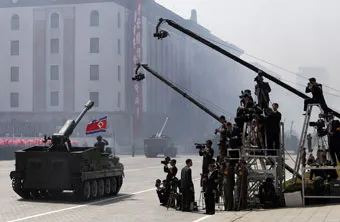
“The censorship of the media existed far before the revolution, but it has increased since because [President Bashar] al-Assad wants to convey a particular picture to the outside world that the regime is fighting off terrorists who are causing the unrest,” Eiad Shurbaji, a Syrian journalist who fled the country in January for fear of his life, told CPJ.” Another tenet of Syria’s propaganda was that minorities would be at risk without the regime, he said. “Media censorship played a huge role in keeping Assad in power.”
CPJ’s 10 Most Censored Countries, released to mark World Press Freedom Day, May 3, also includes, in order: Equatorial Guinea, where all media is controlled, directly or indirectly, by President Teodoro Obiang; Uzbekistan, where there is no independent press and journalists contributing to foreign outlets are subject to harassment and prosecution; Burma, where a series of reforms have not extended to rigid censorship laws; Saudi Arabia, which, like other Middle Eastern countries, has tightened restrictions in response to political unrest; Cuba, where the Communist Party controls all domestic media; and Belarus, where the most recent of many crackdowns by Aleksandr Lukashenko has sent the remnants of independent media underground.
In making its selections, CPJ closely considered six other countries that are heavily censored: Azerbaijan, Ethiopia, China, Sudan, Turkmenistan, and Vietnam. By exporting censorship techniques, China plays a particularly harmful role worldwide.
Among the list of 10 most censored, Saudi Arabia is a new entry. Cuba dropped from seventh in 2006 to ninth this year as authorities recently released more than 20 imprisoned journalists and a vibrant (though persecuted) community of independent bloggers has emerged. Burma has moved from second on CPJ’s previous list to seventh on this analysis because it, too, released a number of imprisoned journalists and informally loosened, at least temporarily, restrictions on reporting for locals and foreigners alike.
Burma’s military-backed government allowed foreign journalists into the country to cover a visit by U.S. Secretary of State Hillary Clinton in December and a landmark by-election in April. “But between those two events, with limited exceptions, the government ignored visa requests from major international news organizations, making it impossible for them to visit the country unless they did so undercover as tourists. Also, visas to cover the April 1 election were valid for five days only, after which all officially approved foreign reporters had to leave en masse,” one Southeast Asia-based reporter for an international news outlet told CPJ. He spoke on condition of anonymity, in order not to jeopardize his ability to report from the country. As for local reporters in Burma, he said, “they are able to report on small domestic protests or rallies and photograph policemen without getting in trouble. They are also often posting articles directly to Facebook and other websites without clearing them with censors,” but they remain wary of the risks entailed in critical journalism.
The 10 most restricted countries employ a wide range of censorship techniques, from the sophisticated blocking of websites and satellite broadcasts by Iran to the oppressive regulatory systems of Saudi Arabia and Belarus; from the dominance of state media in North Korea and Cuba to the crude tactics of imprisonment and violence in Eritrea, Uzbekistan, and Syria.

One trait they have in common is some form of authoritarian rule. Their leaders are in power by dint of monarchy, family dynasty, coup d’état, rigged election, or some combination thereof. In Eritrea, President Afewerki was elected by the National Assembly in 1993, but has since managed to hold off elections and the implementation of a constitution, largely by imprisoning critics and obliterating the private press.
Indeed, disputed legitimacy of leadership is at the heart of censorship and media crackdowns in many places. Syria has long been a tightly controlled country, but last year, when regular demonstrations began to call for the ouster of Assad, foreign correspondents were restricted and locals who reported on the uprisings were arrested; the dangerous task of reporting on Assad’s brutal military response was left to courageous citizen journalists and foreign reporters who sneaked into the country. Iran became vastly more repressive after the disputed 2009 election returned President Mahmoud Ahmadinejad to power. Tehran—which once withheld subsidies and issued short prison sentences to keep critical journalists quiet—now closes news outlets, expels foreign media, imprisons dozens on lengthy terms, and seizes property. Saudi authorities—growing wary as regional uprisings ousted leaders in Tunisia, Egypt, and Libya—added further restrictions in 2011 to the country’s media law, imposed new regulations on Web publications, and banned at least three columnists who had written about the region’s political unrest.
Lagging economic development is another notable trend among heavily censored nations. Of the 10 most censored countries, all but two have per capita income around half, or well below half, of global per capita income, according to World Bank figures for 2010, the most recent available. The two exceptions are Saudi Arabia and Equatorial Guinea, where oil revenues lead to much higher per capita income than the global level. But both of those countries are beset by vast economic inequities between leaders and citizens.
To determine this list, CPJ staff judged all countries according to 15 benchmarks. They included blocking of websites; restrictions on electronic recording and dissemination; the absence of privately owned or independent media; restrictions on journalist movements; license requirements to conduct journalism; security service monitoring of journalists; jamming of foreign broadcasts; blocking of foreign correspondents. All of the countries on the list met at least 10 benchmarks.
For this list, CPJ considered only countries where restrictions are imposed directly by the state. In Somalia and vast sections of Mexico, journalists practice extensive self-censorship in the face of extralegal violence.
1. Eritrea
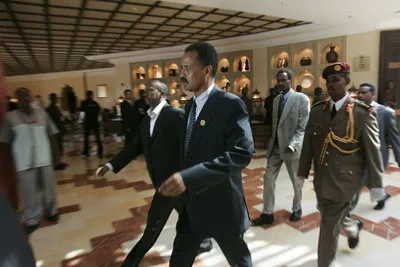
Leadership: President Isaias Afewerki, in power since 1993
How Censorship Works: Only state news media are allowed to operate in Eritrea, and they do so under the complete direction of Information Minister Ali Abdu. Journalists are conscripted into their work and enjoy no editorial freedom; they are handed instructions on how to cover events. Journalists suspected of sending information outside the country are thrown into prison without charge or trial and held for extended periods of time without access to family or a lawyer. The government expelled the last accredited foreign correspondent in 2007. All Internet service providers are required to connect to the World Wide Web through government-operated EriTel. While Eritrea’s journalists in exile run many websites, Internet access is affordable for only a handful of citizens, and mobile Internet isn’t available.
Lowlight: In 2011, Eritrea planned to introduce mobile Internet capability, which is popular throughout the developing world, where cellular towers are often built before Internet or land lines. But the government, fearful of the effect of the Arab Spring uprisings, abandoned the plan.
Click here for more on Eritrea.
2. North Korea
Leadership: Kim Jong Un, who took over when his father Kim Jong Il died in December 2011. His grandfather, Kim Il Sung, ruled North Korea from 1948 until his death in 1994.
How Censorship Works: Nearly all the content of North Korea’s 12 main newspapers, 20 periodicals, and broadcasters comes from the official Korean Central News Agency and focuses on the political leadership’s statements and supposed activities. Ruling elites have access to the World Wide Web, but the public is limited to a heavily monitored and censored network with no connections to the outside world. While The Associated Press opened a Pyongyang bureau in January 2012 staffed with North Koreans, the AP wasn’t granted its own Internet connection and the correspondents have no secure line of communication. A Japan-based media support group, Asiapress, has been giving North Korean volunteers journalism training and video cameras to record daily life in the North. Downloaded onto DVDs or memory sticks, the images are smuggled across the porous border with China and then sent to Japan for broader distribution. Only small numbers of foreign journalists are generally allowed limited access to the country each year, and they must be accompanied everywhere by minders.
Lowlight: KCNA’s official version of Kim Jong Il’s death said he died on December 19, 2011, of heart failure while traveling by train because of a “great mental and physical strain” during a “high-intensity field inspection.” Subsequent analysis of official pronouncements indicates that, wherever he was, Kim most likely died on December 17, and the news was delayed to allow officials to sort out problems of succession.
Click here for more on North Korea.
3. Syria
Leadership: President Bashar al-Assad, who took over upon his father’s death in 2000
How Censorship Works: Since demonstrators began calling for Assad’s ouster in March 2011, the regime has imposed a blackout on independent news coverage, barring foreign reporters from entering and reporting freely, and detaining and attacking local journalists who try to cover protests. Numerous journalists have gone missing or been detained without charge, and many said they were tortured in custody. International media have relied heavily on footage shot by citizen journalists in very dangerous conditions. At least nine journalists have been killed on duty since November 2011, six in circumstances in which government culpability is suspected. In its campaign to silence media coverage, the government disabled mobile phones, landlines, electricity, and the Internet. Authorities have routinely extracted passwords of social media sites from journalists through beatings and torture. The pro-government online group the Syrian Electronic Army has frequently hacked websites to post pro-regime material, and the government has been implicated in malware attacks targeted at those reporting on the crisis.
Lowlight: Ferzat Jarban was the first journalist killed for his work in Syria since CPJ began documenting deaths two decades ago. A local videographer documenting protests and the government’s violent crackdown in his hometown of Al-Qusayr in Homs, his footage showed shocking images of dead women and children. Jarban was last seen being arrested before his body turned up bearing signs of mutilation, with one eye gouged out.
Click here for more on Syria.
4. Iran
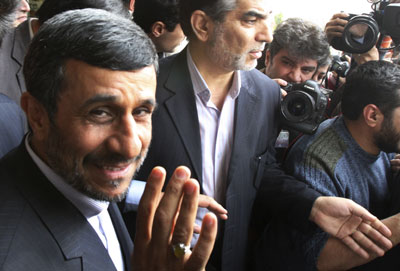
Leadership: Ayatollah Ali Khamenei has been supreme leader since 1989. Mahmoud Ahmadinejad first won the presidency in 2005.
How Censorship Works: The government uses mass imprisonment of journalists as a means of silencing dissent and quashing critical news coverage. Since 2009, a once-robust reformist media has been battered by a government onslaught that has included the banning of publications and the mass arrests and imprisonments of journalists on antistate charges. Imprisoned journalists are subject to horrible conditions including solitary confinement, physical abuse, and torture; families of journalists are also intimidated and harassed in a bid to keep them silent. Iranian authorities maintain one of the world’s toughest Internet censorship regimes, blocking millions of websites, including news and social networking sites; using sophisticated techniques to detect interference with anti-censorship programs; and intimidating reporters via social networks. The regime also frequently jams satellite signals, particularly that of the BBC Persian-language service.
Lowlight: The regime has particularly targeted the BBC, especially since the 2009 disputed presidential elections, when the BBC Persian-language service extensively covered protesters describing abuse by security forces. Relatives and friends of BBC staff members have been arrested, questioned, or intimidated. Tehran has jammed BBC satellite signals, and the broadcaster reported a “sophisticated cyber-attack” on its email and Internet services that coincided with efforts to jam its satellite feeds into Iran.
Click here for more on Iran.
5. Equatorial Guinea
Leadership: Teodoro Obiang Nguema Mbasogo, in power since a 1979 coup
How Censorship Works: Obiang’s government tightly controls all news and information over national airwaves. Technically, some outlets are privately owned, but none are independent, as Obiang and his associates exert direct or indirect control. State media do not provide international news coverage unless Obiang or another official travels abroad. Censors enforce rigid rules to ensure the regime is portrayed positively; journalists who don’t comply risk prison under criminal statutes including defamation. Security agents closely shadow foreign journalists and restrict photography or filming that documents poverty. The government paid three Washington-based public relations firms a total of US$1.2 million between April and October 2010 to produce positive news about Equatorial Guinea, according to a report by the U.S. Department of Justice.
Lowlight: At the outbreak of the Arab Spring, the government banned state media from mentioning on air any of the North African or Middle Eastern countries involved. In March 2011, authorities detained and suspended a state radio announcer for a mere reference to a “leader of the Libyan revolution.”
Click here for more on Equatorial Guinea.
6. Uzbekistan
Leadership: President Islam Karimov, first elected in 1991
How Censorship Works: No independent media outlets are based in Uzbekistan. Independent journalists—mostly contributors to outlets outside the country—are subject to interrogation and prosecution under defamation charges or outdated statutes such as “insulting national traditions.” They and their families are harassed and smeared; some have seen sensitive personal information published by state media. Muhammad Bekjanov and Yusuf Ruzimuradov of the opposition newspaper Erk have been imprisoned longer than any other jailed journalists in the world, CPJ research shows. Internet access to independent news websites and online broadcasters is blocked, as are some keywords and topics on individual Web pages. Foreign journalists are denied visas and accreditation.
Lowlight: Karimov’s own nephew, the critical independent journalist Dzhamshid Karimov, vanished in 2006 after visiting his mother in the hospital. His friends eventually discovered that he was being held against his will in a psychiatric clinic, where he remained captive until November 2011.
Click here for more on Uzbekistan.
7. Burma
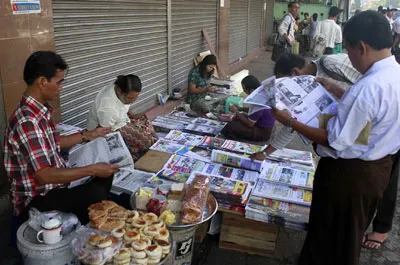
Leadership: President Thein Sein, a former general who assumed office in 2011 after a 2010 election that heavily favored military-backed candidates
How Censorship Works: Although Burma has transitioned from military to civilian government, released journalists among hundreds of political prisoners, and promised more reforms, its vast censorship structure remains in place. All privately run news publications in Burma are forced to publish weekly rather than daily due to stifling prepublication censorship requirements. The government’s Press Scrutiny and Registration Division (PSRD) censors news that could reflect poorly on the military or the government it backs, and imposes a complete blackout on reporting of the armed conflict with ethnic Kachin rebels in the remote north. The government dominates radio and television with a steady stream of propaganda. Laws bar the ownership of a computer without a license and ban the dissemination or posting of unauthorized materials over the Internet. Prison sentences have been used to punish reporters working for exile-run media groups. Regulations imposed in 2011 banned the use of flash drives and voice-over-Internet-protocol (VoIP) communication in Internet cafés. Local reporters with international agencies are subject to constant police surveillance; others only publish under pseudonyms to prevent possible reprisals. Foreign reporters are regularly denied journalist visas unless the government aims to showcase a state-sponsored event. Those discovered reporting on tourism visas are expelled.
Lowlight: In February 2012, the PSRD banned a commentary written by journalist Ludu Sein Win about a media conference where Ministry of Information officials discussed a proposed new media law that would allow more press freedom—including an end to prepublication censorship. Sein Win wrote tongue-in-cheek that those who attended the conference were “helping to make the rope to hang themselves.” The banned article was later published by the exile-run Irrawaddy.
Click here for more on Burma.
8. Saudi Arabia
Leadership: King Abdullah bin Abdulaziz Al-Saud, who succeeded his half-brother, King Fahd, in 2005
How Censorship Works: The Saudi kingdom’s media law is highly restrictive and vaguely worded, with penalties severe and arbitrary. Authorities have the right to appoint and fire senior editors in traditional media at will; after the emergence of a vibrant, unregulated online news sector, they introduced similar restrictions on the Internet. Regulations require government registration and approval of editors for any organization or individual conducting “electronic journalism” or “displaying audio and visual material” on websites, while criteria for approval are vaguely defined. No foreign or local journalists are granted access to the Eastern Province, where protesters have been calling for political reforms and greater rights for the Shiite minority since February 2011. Local news websites that have reported on the unrest have been shut down and their editors arrested. Foreign news about events outside Saudi Arabia is available, but international news outlets operating inside its borders limit their reporting in order to maintain accreditation.
Lowlights: Saudi authorities expelled Riyadh-based Reuters correspondent Ulf Laessing in March 2011, angered by his coverage of political unrest. Laessing wrote: “State security agents knocked at dawn at my hotel room after I had covered Shiite protests in the Eastern Province. A week later, the government withdrew my accreditation.”
Click here for more on Saudi Arabia.
9. Cuba
Leadership: President Raúl Castro, who took over from his brother, Fidel Castro, in 2008; the country has been a one-party communist state since Fidel Castro took power in a 1959 revolution
How Censorship Works: All authorized domestic news media are controlled by the Communist Party, which recognizes freedom of the press only “in accordance with the goals of the socialist society.” Internet service providers are obliged to block objectionable content. Independent journalists and bloggers all work on websites that are hosted overseas and updated through embassies or costly hotel connections. Although the last of the 29 independent journalists imprisoned in the 2003 Black Spring crackdown was released in April 2011, the government continues to persecute critical journalists with arbitrary arrests, short-term detentions, beatings, surveillance, and smear campaigns on state media and on the Internet. Government supporters sometimes gather outside the homes of critical journalists to intimidate them. Officials grant visas to foreign journalists selectively.
Lowlight: Prominent critical blogger Yoani Sánchez was refused a visa to leave the country in February for the 19th time, she said. Sánchez has been targeted in the past with smear campaigns, cyber-attacks on her blog, and assault.
Click here for more on Cuba.
10. Belarus
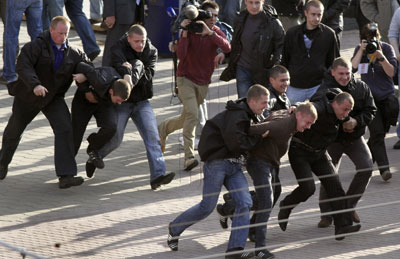
Leadership: President Aleksandr Lukashenko, in office since 1994
How Censorship Works: Lukashenko’s wide-ranging anti-press tactics have included politicized prosecution of journalists; imprisonments; travel bans against critical reporters; debilitating raids on independent newsrooms; wholesale confiscation of newspapers and seizure of reporting equipment; and failure to investigate the murders of at least three journalists in the past 10 years. After the rigged election of 2010, he cracked down on what was left of the independent media, sending it underground. Working as a journalist without government-issued accreditation is prohibited; television is state-owned or state-controlled. In 2010, Lukashenko signed a law to censor the Internet, created an agency to implement the law, and placed his own son to head it. Shortly after it was created, the agency blacklisted independent and opposition websites. Public access to the Internet requires a government-issued ID, which allows the KGB to monitor users. At least one opposition website has been the target of hacking attacks, including one in which a password obtained via malware was used to insert a false news story about an opposition politician.
Lowlight: Following the December 2010 presidential vote, Lukashenko imprisoned prominent independent journalists Irina Khalip and Natalya Radina on fabricated charges in retaliation for reporting on post-election protests. Khalip was later released from prison under heavy restrictions, while Radina was forced to flee Belarus to avoid a repeated incarceration.
Click here for more on Belarus.
The runners-up:
These heavily censored countries nearly made CPJ’s list.
- Press freedom in Turkmenistan, which was among CPJ’s 10 Most Censored Countries in 2006, remains in dire condition. All media are government-controlled; editors are appointed by President Gurbanguly Berdymuhammedov; and access to independent news websites is blocked.
- In China, some commercially-minded news media test boundaries while Internet users get around Web blocking. But authorities make extensive use of propaganda directives; impose travel and access bans; jam signals and censor international broadcasts; and intimidate critical journalists through job dismissals and imprisonment. Beijing is also a model for censorship regimes elsewhere and an exporter of censorship technology, including to several countries in CPJ’s top 10.
- In Ethiopia, censorship has become far more restrictive in recent years. The government of Meles Zenawi appoints managers of broadcasters and state newspapers and licenses all media. Anti-terrorism legislation criminalizes any reporting that the Ethiopian government deems favorable to opposition movements designated as terrorist.
- Government officials in Vietnam meet weekly with editors to give coverage instructions. Reporting on sensitive topics such as relations with China can result in arrest and imprisonment.
- Authorities in Sudan frequently confiscate newspapers, which are the widespread form of media. This year, security forces have increasingly adopted the technique of confiscating newspaper editions wholesale to inflict financial losses on publishers.
- In Azerbaijan, there are no foreign or independent broadcasters on the airwaves, and the few journalists who work on independent newspapers or websites are subject to intimidation tactics, including imprisonment on fabricated charges.
EDITOR’S NOTE: The Burma section of this report has been corrected to reflect that President Thein Sein was elected in 2010, not in 2011.